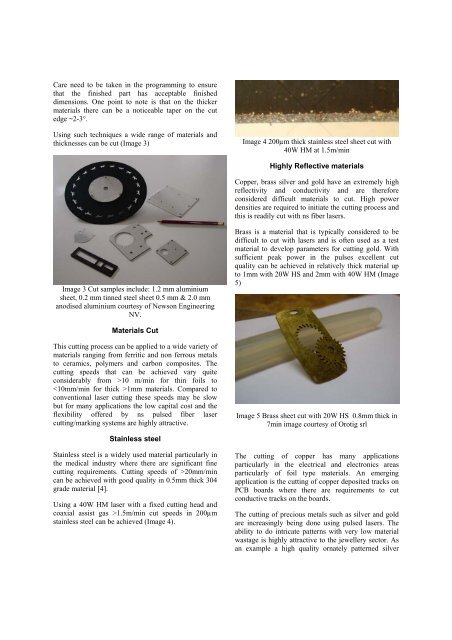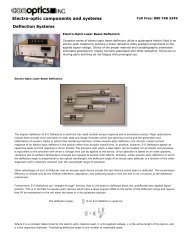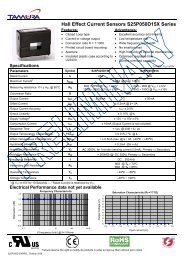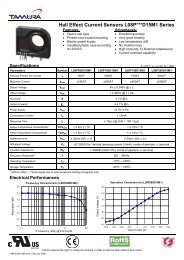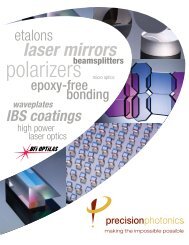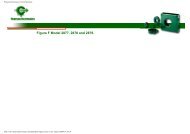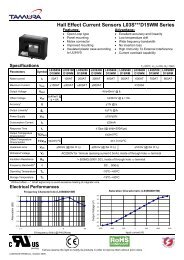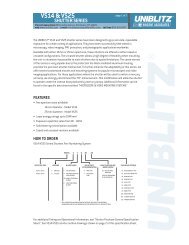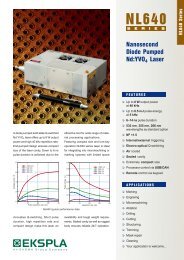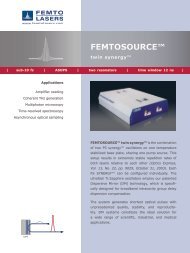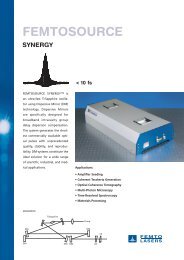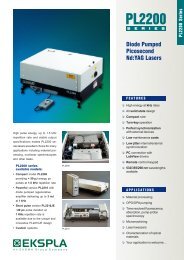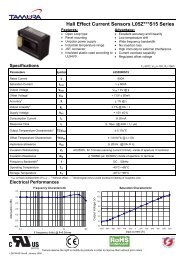micro-cutting with nanosecond pulsed fiber lasers - BFI Optilas
micro-cutting with nanosecond pulsed fiber lasers - BFI Optilas
micro-cutting with nanosecond pulsed fiber lasers - BFI Optilas
You also want an ePaper? Increase the reach of your titles
YUMPU automatically turns print PDFs into web optimized ePapers that Google loves.
Care need to be taken in the programming to ensure<br />
that the finished part has acceptable finished<br />
dimensions. One point to note is that on the thicker<br />
materials there can be a noticeable taper on the cut<br />
edge ~2-3°.<br />
Using such techniques a wide range of materials and<br />
thicknesses can be cut (Image 3)<br />
Image 3 Cut samples include: 1.2 mm aluminium<br />
sheet, 0.2 mm tinned steel sheet 0.5 mm & 2.0 mm<br />
anodised aluminium courtesy of Newson Engineering<br />
NV.<br />
Materials Cut<br />
This <strong>cutting</strong> process can be applied to a wide variety of<br />
materials ranging from ferritic and non ferrous metals<br />
to ceramics, polymers and carbon composites. The<br />
<strong>cutting</strong> speeds that can be achieved vary quite<br />
considerably from >10 m/min for thin foils to<br />
1mm materials. Compared to<br />
conventional laser <strong>cutting</strong> these speeds may be slow<br />
but for many applications the low capital cost and the<br />
flexibility offered by ns <strong>pulsed</strong> <strong>fiber</strong> laser<br />
<strong>cutting</strong>/marking systems are highly attractive.<br />
Stainless steel<br />
Stainless steel is a widely used material particularly in<br />
the medical industry where there are significant fine<br />
<strong>cutting</strong> requirements. Cutting speeds of >20mm/min<br />
can be achieved <strong>with</strong> good quality in 0.5mm thick 304<br />
grade material [4].<br />
Using a 40W HM laser <strong>with</strong> a fixed <strong>cutting</strong> head and<br />
coaxial assist gas >1.5m/min cut speeds in 200µm<br />
stainless steel can be achieved (Image 4).<br />
Image 4 200µm thick stainless steel sheet cut <strong>with</strong><br />
40W HM at 1.5m/min<br />
Highly Reflective materials<br />
Copper, brass silver and gold have an extremely high<br />
reflectivity and conductivity and are therefore<br />
considered difficult materials to cut. High power<br />
densities are required to initiate the <strong>cutting</strong> process and<br />
this is readily cut <strong>with</strong> ns <strong>fiber</strong> <strong>lasers</strong>.<br />
Brass is a material that is typically considered to be<br />
difficult to cut <strong>with</strong> <strong>lasers</strong> and is often used as a test<br />
material to develop parameters for <strong>cutting</strong> gold. With<br />
sufficient peak power in the pulses excellent cut<br />
quality can be achieved in relatively thick material up<br />
to 1mm <strong>with</strong> 20W HS and 2mm <strong>with</strong> 40W HM (Image<br />
5)<br />
Image 5 Brass sheet cut <strong>with</strong> 20W HS 0.8mm thick in<br />
7min image courtesy of Orotig srl<br />
The <strong>cutting</strong> of copper has many applications<br />
particularly in the electrical and electronics areas<br />
particularly of foil type materials. An emerging<br />
application is the <strong>cutting</strong> of copper deposited tracks on<br />
PCB boards where there are requirements to cut<br />
conductive tracks on the boards.<br />
The <strong>cutting</strong> of precious metals such as silver and gold<br />
are increasingly being done using <strong>pulsed</strong> <strong>lasers</strong>. The<br />
ability to do intricate patterns <strong>with</strong> very low material<br />
wastage is highly attractive to the jewellery sector. As<br />
an example a high quality ornately patterned silver


